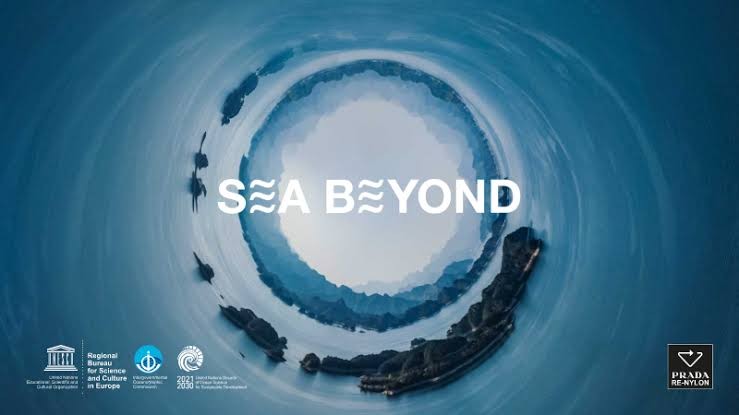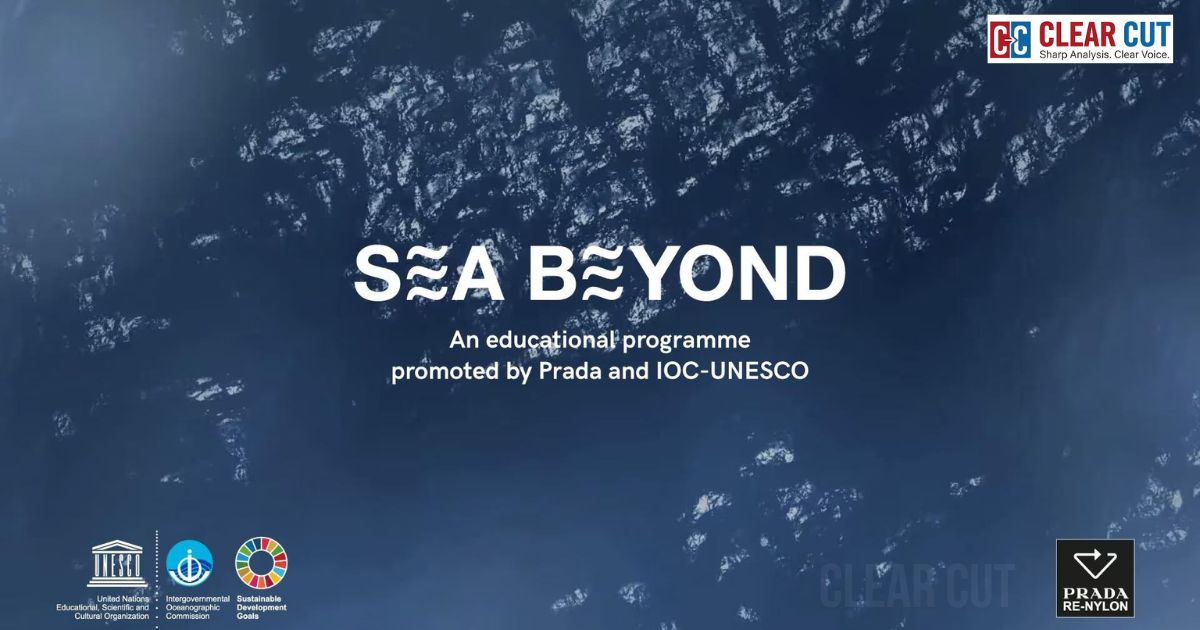Photo Credit: Prada Group
Clear Cut Education Desk
New Delhi, UPDATED: Sep 30, 2025 03:15 IST
Written By: Janmojaya Barik
The health of the world’s oceans already at risk from and over-use, more and more hinges on how well societies can couple science, culture, and education. In June 2025, at the UN Ocean Conference in Nice, an unexpected collaboration between global science policy and high fashion took a dramatic step in this direction. The Prada Group and UNESCO’s Intergovernmental Oceanographic Commission (IOC) launched the establishment of the SEA BEYOND Multi-Partner Trust Fund for Connecting People and the Ocean. The fund was seeded by Prada with €2 million, and UNESCO has called on other governments, foundations, and corporations to become partners.
The fund complements the SEA BEYOND programme, initiated in 2019 by Prada and UNESCO-IOC to foster ocean literacy. It was initially geared mainly towards education to provide the tools to both teachers and students so that they could learn the ocean’s influence on climate control, biodiversity, and human existence. It has encompassed over 34,000 students in 56 nations in the last five years and has introduced ocean literacy into the classroom at various levels. Projects like Venice’s “Kindergarten of the Lagoon” and the international “Ideas Box” program.
The resolution to create a permanent trust fund is a milestone. Rather than executing SEA BEYOND as individual philanthropic initiatives aligned with a single business, the new fund is targeted at engaging a range of partners and funding sustained interventions. Five priority areas have been identified by UNESCO: blue education; empowerment of youth; ocean culture and heritage; bridging science, policy and society; and strategic communications to change ocean narratives. The initiative will roll out in two phases with the first call for proposals anticipated in December 2025.
Aside from its size, what stands out about the initiative is its partnership model. Luxury fashion brands are commonly accused of greenwashing or treating sustainability as a marketing tool. Conversely, Prada has tied its Re-Nylon line – a product line founded on recycled material to a consistent donation of one percent of revenue to SEA BEYOND. The effort has extended past philanthropy into the sphere of institutional infrastructure. In 2025, UNESCO and Prada opened the world’s first permanent Ocean Literacy Centre on San Servolo island in Venice. The centre, designed by CRA-Carlo Ratti Associati, employs multisensory displays and interactive installations to join global issues to local marine environments.
A further achievement was achieved earlier this year when Brazil became the first nation officially recognized by UNESCO for integrating ocean literacy into its national school curriculum. This action directly follows the energy built up by SEA BEYOND, which has stressed that ocean conservation needs long-term knowledge that spans generations and not single campaigns. If others start to follow Brazil, a “blue curriculum” might become a global reality, so future citizens will be educated with the ocean in their perspective.
Nevertheless, the road ahead is not without obstacles. A key one is equity. Big programs commonly risk reaching elite schools in urban areas at the expense of poor or rural ones. SEA BEYOND has tried to deal with that using portable education kits and web resources, but expanding inclusively will continue to be a challenge. Impact measurement is also an issue. Although attendance statistics are encouraging, finally, the goal is to shape behavior, governance, and conservation outcomes. That takes long-term research, measuring how education and culture turn into effective ocean stewardship.
The larger question is whether other sectors will move into similar functions. By seeding a multi-partner trust fund, Prada has sent a message that corporate responsibility can go beyond giving to building global governance tools. Should energy corporations, shipping companies, and fisheries participate in such an arrangement, it could be a forceful combination of resources, responsibility, and expertise. On the other hand, there are questions of control and balance of power—corporate funds must not skew scientific priorities or policy agendas. UNESCO’s management of the fund will be essential to ensure independence and transparency.

Photo Credit : Prada Group
One thing is certain: SEA BEYOND has already rewritten the language of corporate social responsibility. Rather than considering the ocean as a philanthropic end for corporates. it positions the sea as an interconnected system that supports climate stability, food security, and cultural identity. The trust fund has the possibility of extending this narrative across the globe, particularly if it manages to connect youth, teachers, scientists, and policymakers in a common platform.
The oceans enclose more than seventy percent of the globe but are undervalued and under-protected. Sea-level rise, plastic waste, and fisheries collapse are urgent alerts to the extent that human futures are tied to the condition of marine ecosystems. The opening in 2025 of the SEA BEYOND Trust Fund is an acknowledgement that the protection of the ocean demands not only scientific advice but also cultural imagination and cross-sector collaboration. Whether this fund is able to achieve tangible change will depend on numbers of participants who join up and how well projects are selected and assessed. But already it has indicated that a luxury brand and a UN agency, unusual bedfellows at first glance, are able to demonstrate the way to translate awareness into action.




